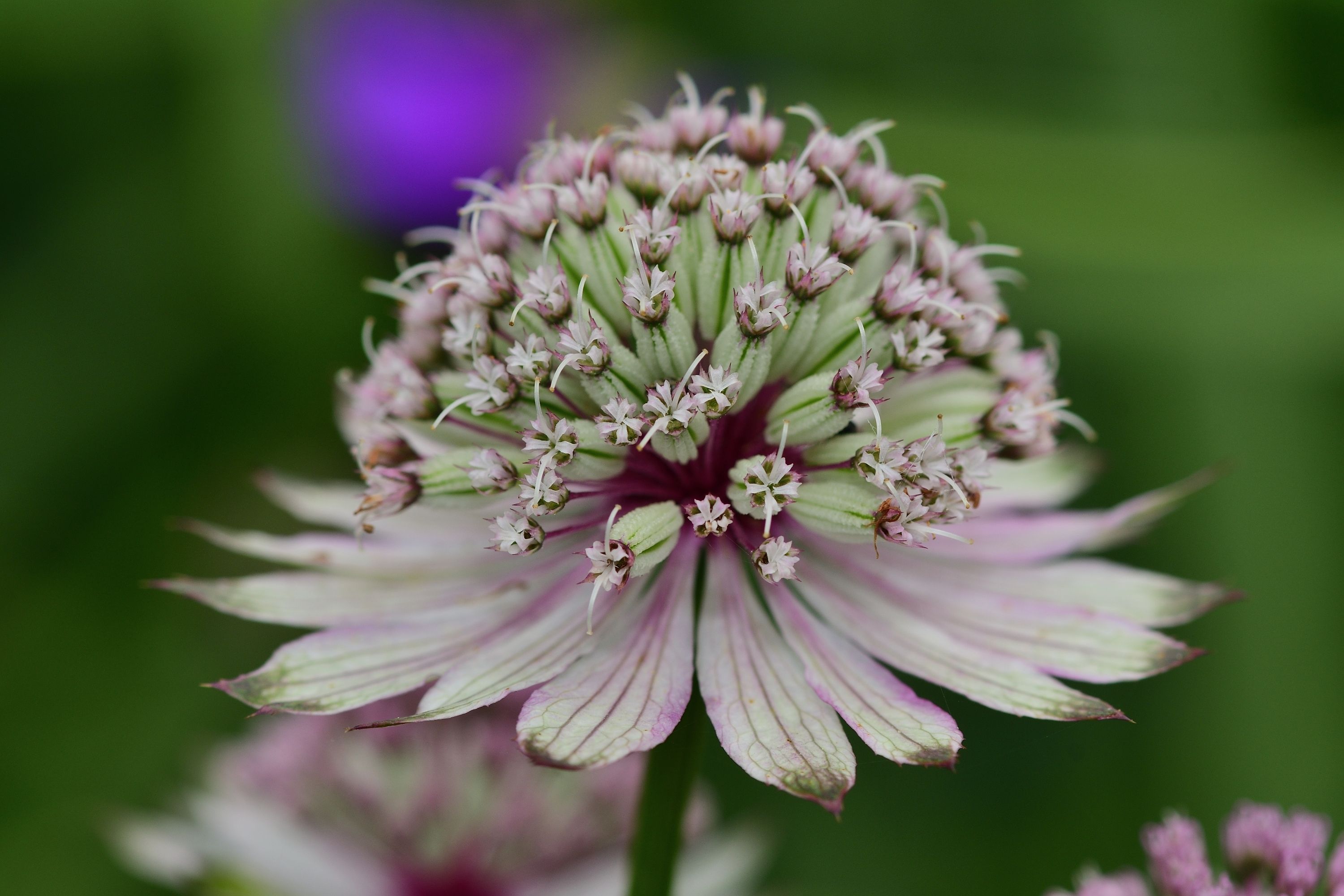Great Masterwort
(Astrantia major)

Description
Astrantia major, also known as Great Masterwort, is a herbaceous perennial plant species that belongs to the Apiaceae family. The plant is native to Europe and can grow up to 60-100 cm tall. The flowers of Astrantia major are unique and attract pollinators, making it a popular choice for gardens. In this article, we will delve deeper into the botanical aspects, characteristics, and uses of Astrantia major. Botanical aspects Astrantia major has a fleshy root system that allows it to tolerate drought conditions. The plant produces a basal rosette of leaves that are lobed, palmate, and toothed. The stem of the plant is erect, hairy, and branched, and it bears a cluster of flowers at the top. The inflorescence of Astrantia major is composed of many small flowers that are arranged in an umbel-like shape. The flowers of Astrantia major have a unique appearance, with a central disc that is surrounded by petal-like bracts. The flowers of Astrantia major are hermaphroditic and can self-pollinate. However, they are also visited by a range of insects such as bees, butterflies, and hoverflies, which help to increase genetic diversity. Characteristics Astrantia major is a hardy plant that is tolerant of a range of soil types, including clay, loam, and sandy soils. The plant prefers moist soil but can tolerate drought conditions. Astrantia major is also shade tolerant and can grow in full sun to partial shade. The plant is frost hardy and can survive temperatures as low as -20°C. Astrantia major is a slow-growing plant that takes several years to establish. However, once established, it can spread rapidly by rhizomes and self-seeding. The plant is also relatively long-lived, with some specimens known to live for up to 20 years. Uses Astrantia major is a popular garden plant due to its unique and attractive flowers. The plant is often used in mixed borders, woodland gardens, and cottage gardens. Astrantia major is also used in cut flower arrangements due to its long-lasting flowers. In traditional medicine, Astrantia major has been used to treat a range of ailments, including digestive disorders, respiratory infections, and wounds. However, there is limited scientific evidence to support these claims, and the plant should not be used without the supervision of a qualified healthcare practitioner. Cultivation Astrantia major is a relatively low maintenance plant that requires little care. The plant prefers moist soil and should be watered regularly during dry periods. However, overwatering can cause the plant to rot, so care should be taken not to water excessively. Astrantia major can be propagated by seed, division, or root cuttings. Seeds should be sown in the spring or autumn, and seedlings should be transplanted into their final position when they are large enough to handle. Division should be carried out in the spring or autumn, and root cuttings should be taken in the autumn. Conclusion Astrantia major is a unique and attractive plant species that is popular with gardeners and florists alike. The plant is hardy, easy to grow, and tolerant of a range of growing conditions. However, while the plant has been used in traditional medicine, there is limited scientific evidence to support its efficacy. Overall, Astrantia major is a beautiful addition to any garden or floral arrangement.
Taxonomic tree:







